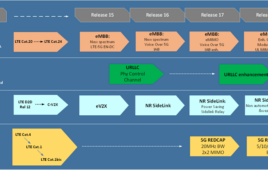The iPhone 4S is the most data-hungry device in the land, according to a new study from Arieso, which showed that iPhone 4S users gobble up twice as much data as iPhone 4 users and three times as much as iPhone 3G users. Perhaps even more surprising was that the iPhone 4S actually uses more data than even the iPad.
The Arieso study, “Recent Smartphone Trends & the Extreme Data User,” compares data usage across a variety of smartphones and connected devices.
Michael Flanagan, chief technology officer for Arieso and study author, said the exponential increase in data usage across the board is reason for concern.
“While the report provides general trends, the studies on which they’re based demonstrate the importance to operators of understanding the increased consumption each type of smartphone brings. Despite stark industry warnings, mobile operators are still playing ‘Guess Who?’ with their subscribers,” Flanagan wrote in a statement.
The study found that different users and different devices exhibit very different demands on the network. In 2011, iPhone 4S users downloaded 2.76 times as much data as users of the iPhone 3G in 2011. And while an Android-powered device maintains last year’s position at the top of the table for uplink data volumes, with HTC Desire S users typically uploading 3.23 times as much data as iPhone 3G users, the iPhone 4S falls just behind in this category with a typical 3.20 times as much data uploaded.
The study uses the iPhone 3G (100 percent) as a benchmark against usage by other devices.
To be sure, the bits and bytes are flying, but it appears the world of data usage mirrors the current economic environment bemoaned by the Occupy Wall Street (OWS) movement. According to Arieso, just 1 percent of all users now consume half of the entire downlink data, a situation to which carriers have responded with data caps and throttling measures.
“Without adequately preparing networks to support the new generation of smart devices, operators risk spiraling and misplaced operational expenditure and delivering a sub-par quality of experience to customers,” Flanagan wrote. “It’s critical that operators redouble their efforts to limit the impact of this inevitable squeeze.”




